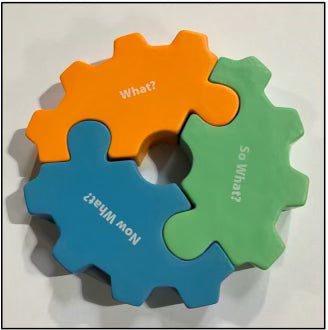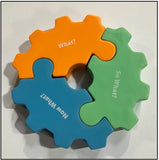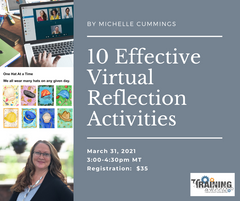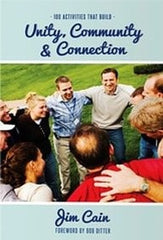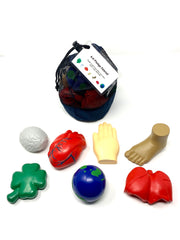Processing Gears: What? So What? Now What?
These Processing Gears are a nifty tool to help teach the sequence of an effective debriefing session: What? So What? Now What?
Use them to help describe the Experiential Learning Cycle to your participants, or as a visual tool to help keep you on track in your debriefing questions. The pieces come apart just like a puzzle, so you can focus on one piece at a time.
Experiential Learning Cycle 
(based on the work of David Kolb and others)
As individuals participate in an experiential activity, they should ask themselves these questions: What? So What? Now What? The reflection process begins with a defining and sharing of the "What" of the participants's experience, and follows a continuous cycle towards "So What?" and "Now What?"
- What? Report the facts and events of an experience, objectively.
- So What? Analyze the experience.
- Now What? Consider the future impact of the experience on you and others.
One of the most basic models of our work, the Experiential Learning Cycle (Kolb, et al), proposes that after an Experience comes Reflection, followed by Analysis of the experience, which leads to Application of the new information learned. The complete cycle is required for learning to take place. Unfortunately, some trainers and facilitators interrupt the model after the activity segment, and then are surprised when their participants fail to retain the information presented.
There are several processing tools on the market that help facilitators build this skill. The Chiji Processing Dice activity was one of the first tools on the market that taught this skill. The Debriefing Thumball and Debriefing Wheelies are two tools I designed to help facilitators ask debriefing questions in a proper sequence. This sequence makes sense to participants and can also shift some of the responsibility for successful processing from the facilitator to the participants The sequence of What - So What - Now What not only takes participants through a progression for processing a specific event, but also allows participants to own the process without the aid of the facilitator.
